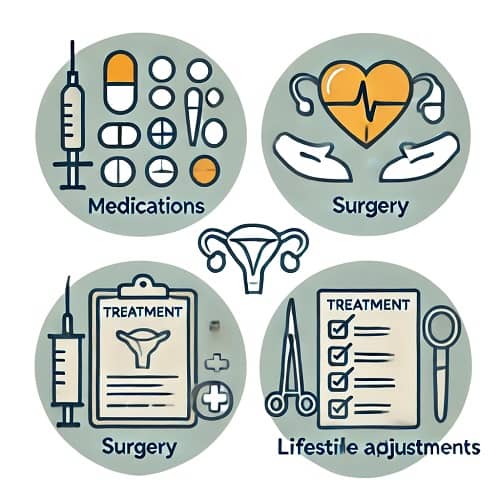Uterine adenomyosis is commonly characterized by severe menstrual pain and irregular periods. Fortunately, there are various treatment options available to alleviate symptoms.

Table of Contents
1. Medication Treatment
Medication treatment is the most common method for managing uterine adenomyosis. The commonly used medications include:
- Non-steroidal anti-inflammatory drugs (NSAIDs): These drugs, such as ibuprofen, are effective at relieving menstrual pain.
- Hormonal medications: Birth control pills and progestin medications can help regulate menstrual cycles and reduce symptoms.
These medications are used to control pain, reduce inflammation, and regulate hormone levels, helping to manage the condition effectively.
2. Surgical Treatment
If medication fails to provide adequate relief or the condition is severe, surgical treatment may be necessary. Common surgical options include:
- Laparoscopic surgery: This minimally invasive procedure involves small incisions to remove the affected tissue. It is suitable for patients with localized lesions.
- Hysterectomy: In extreme cases, especially for women who do not wish to have children, a hysterectomy (removal of the uterus) may be considered. However, this is a major surgery with significant physical and psychological considerations, so it should be approached with caution.
3. Lifestyle Adjustments
Adopting a healthy lifestyle can significantly aid in symptom relief and improve overall health. Key adjustments include:
- Balanced diet: Consuming a diet rich in nutrients to support overall well-being.
- Regular exercise: Engaging in regular physical activity can help alleviate pain, improve circulation, and boost immunity.
- Adequate rest: Ensuring sufficient sleep and rest to help the body recover.
- Stress management: Learning relaxation techniques and managing stress can be beneficial for reducing pain and other symptoms.
Conclusion
Uterine adenomyosis can be managed through various treatments, including medication, surgery, and lifestyle adjustments. It is crucial to choose the most appropriate method based on the severity of the condition. If symptoms significantly impact the quality of life, seeking medical advice and following a customized treatment plan can help alleviate discomfort and improve overall well-being.